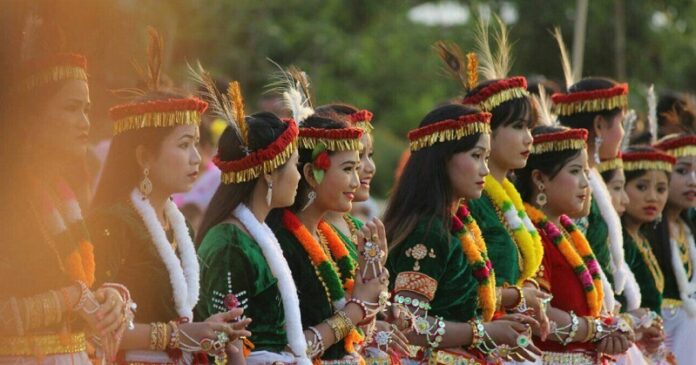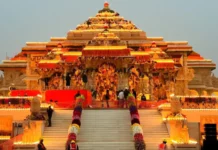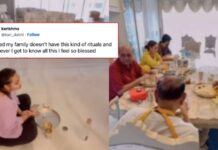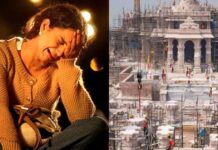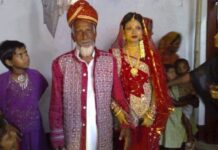Manipur is one of the Seven Sister States of India. This beautiful place is surrounded by mountains and lush green forests. Besides its natural beauty and mesmerizing waterfalls, it also showcases rich culture in the form of costumes, arts, dance, and music. People from all over the country visit to witness their culture at the time of Manipur festivals. Just like other states, Manipur has various colorful and vibrant festivals as well.
That is why from “Heirku Hindongba” to “Gang Ngai”, we have gathered a list of widely celebrated Manipur festivals that you must experience once in your lifetime:
1) Heirku Hindongba
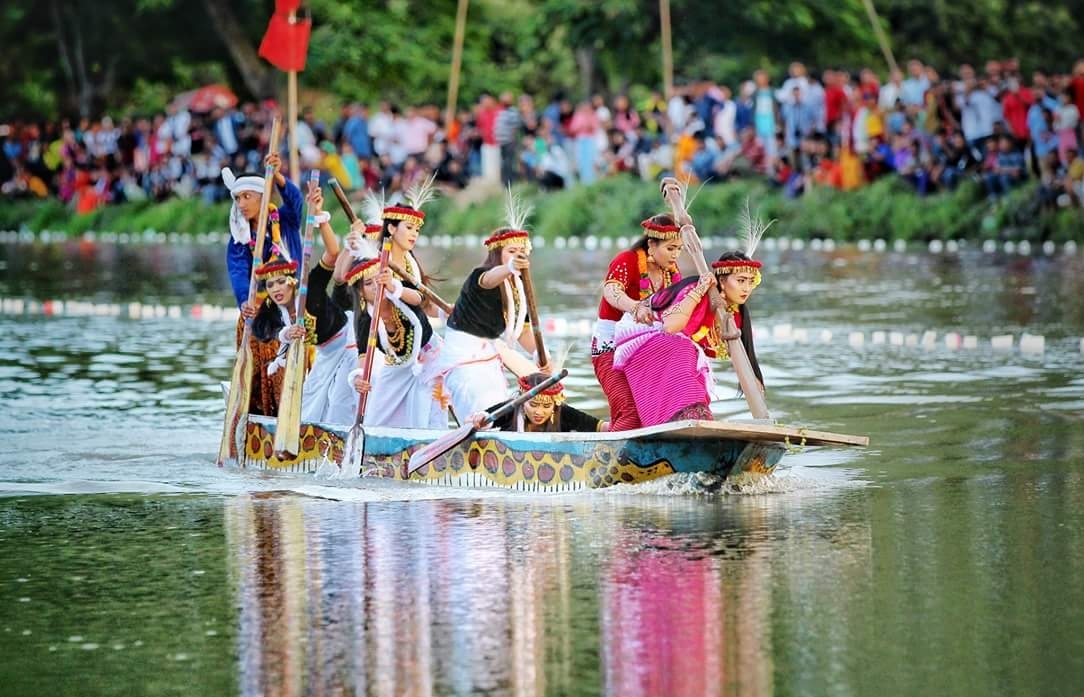
The Heirku Hindongba is a famous festival in Manipur that is celebrated in the month of September. This month is also called Langbal month in Manipur. It is celebrated on the 11th day of September where a boat race on the canal of the Bijoy Govinda area takes place. People with a lot of enthusiasm celebrate this festival by cleaning their boats and decorating them with garlands.
Time: November
Duration: 1-day
Highlights: Traditionally worshipping the deities
2) Kut Festival
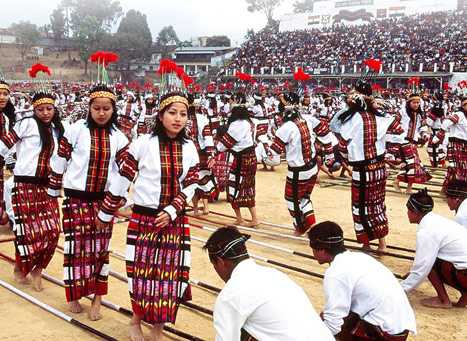
The Kut festival is celebrated by the Kuki-Chin-Mizo tribe to bring peace, harmony, communal ties, and friendship to society. This is one of the well-known festivals of Manipur that is also known as Chavang-Kut or Khodou. In this festival, people thank God for the generous food stock by singing and dancing.
Time: November
Duration: 1-day
Highlights: Miss Kut, a beauty pageant
3) Manipur Sangai Festival
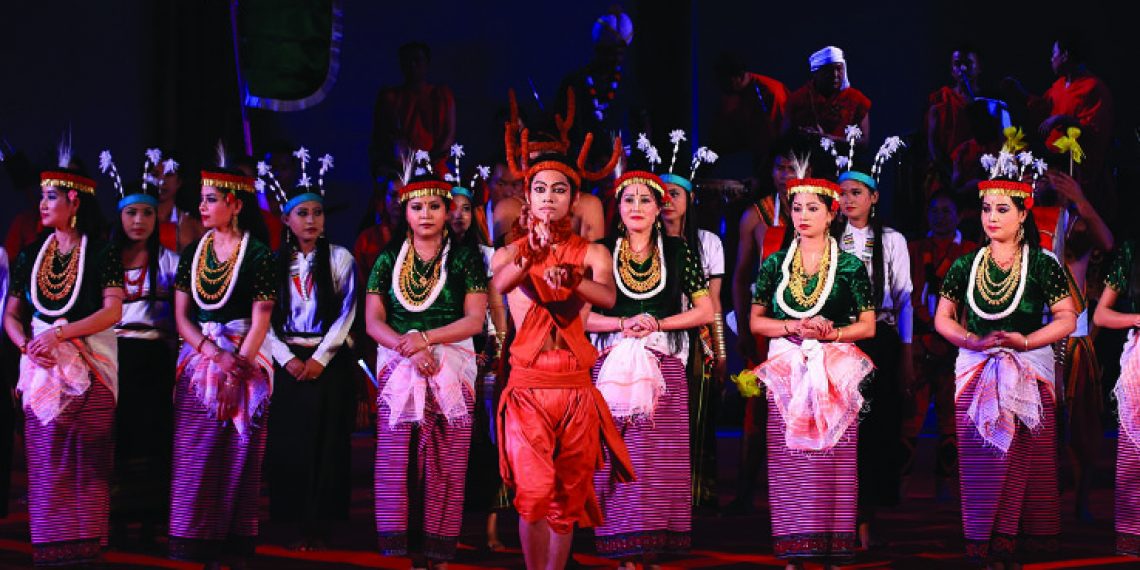
The Manipur Sangai Festival is one of the colorful and vibrant festivals in Manipur. This festival is celebrated in the month of November where people showcase the rich culture and heritage of the state. People display artifacts and handlooms to celebrate this festival, along with singing and dancing. Interestingly, it is also organized jointly by MSFDS and Film Forum Manipur. The Manipur Sangai Festival is also an initiative to promote the Manipur film industry globally.
Time: November
Duration: 10-days
Highlights: Traditional Manipuri dance
4) Ningol Chakouba
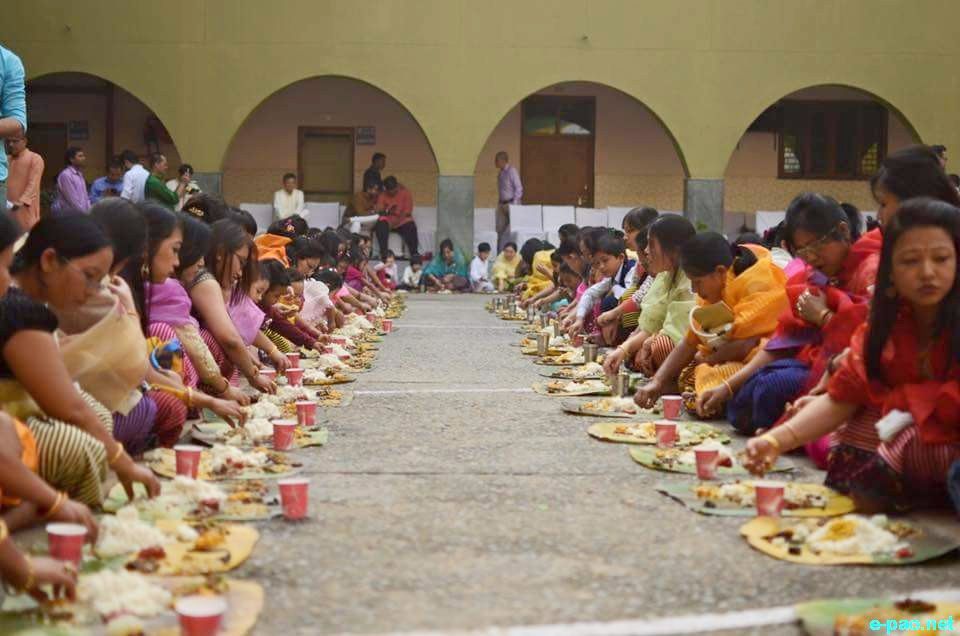
When we talk about festivals in Manipur, the list would be incomplete without the Ningol Chakouba festival. This festival is a celebration of Meiteis or the Vaishnavites. It is celebrated on the 2nd day of the New Moon in the month of November. This month is also known as the Manipuri month of Hiyangei. To celebrate this festival, married women are invited to the home and treated with nothing but immense warmth and delicious meals.
Time: November
Duration: 1-day
Highlights: Special traditional delicacies
5) Cheiraoba Festival
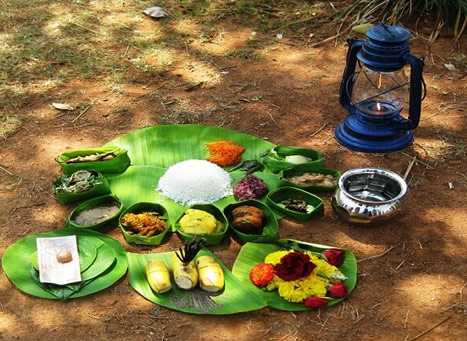
Cheiraoba Festival is a famous Manipur festival that is celebrated on the 1st day of Sajibu month. Sajibu month is the month of March and April. To celebrate this festival, people wear traditional clothes, make authentic delicacies, visit friends and relatives, and exchange gifts and greeting with each other. This auspicious festival is dedicated to Goddess Sanamahi. If you don’t know, this festival is also known as Spring Festival.
Time: April
Duration: 1-day
Highlights: Cheiraoching hilltop
6) Yaoshang
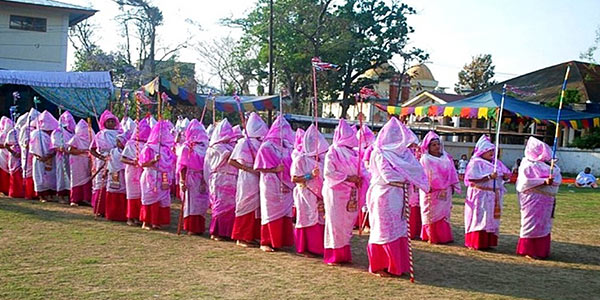
Yaoshang is a Manipur Holi that is celebrated on a full moon day of Phalguna month. Phalgun month is the month of February and March. It is a 5-day festival of Manipur where people throw dry and wet colors on each other. This famous festival is not celebrated only in Manipur, but also in the entire north-eastern region of India. Children organize fun activities in this festival and collect money from elders as well.
Time: March
Duration: 5-days
Highlights: Thabal Chongba, Manipur folk dance
7) Lai Haraoba
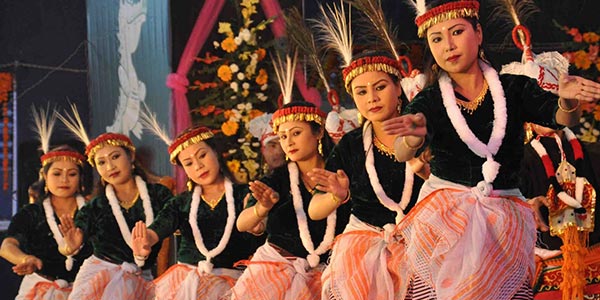
In the Lai Haraoba festival of Manipur, people worship local gods and goddesses. Besides them, people also worship their ancestors in this festival to get blessings from them. They worship local deities in this festival such as Leimarel, Pakhangba, Sanamahi, Nongpok Ningthou, and 364 Umang Lais or Jungle deities. People celebrate this festival by presenting folk dances and enacting dramas.
Time: May
Duration: 1-day
Highlights: Procession around the locality
8) Kang Festival
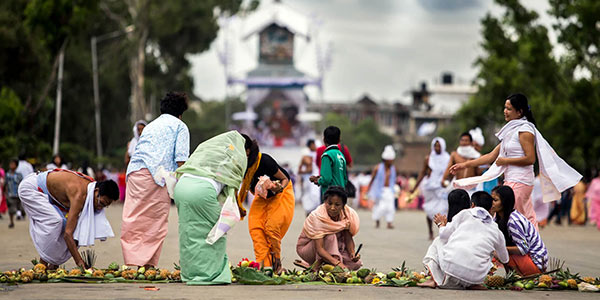
Kang Festival is one of the most renowned Manipur festivals that is also known as Rath Yatra. Every year, this festival is celebrated in the Govindjee temple where Jagannatha, Balarama, and Subhadra are taken in Kang. Kang is nothing but a local word for rath or chariot. With musical instruments and folk dances, people celebrate this festival. During the yatra, they offer cotton balls soaked in ghee to the gods.
Time: June/July
Duration: 10-days
Highlights: Kirtan Khubakisei
9) Chumpha Festival
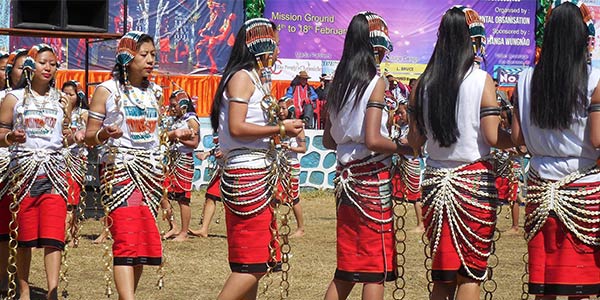
The Chumpha Festival is one of the important festivals of Manipur as it is celebrated for 7 days after the harvest. To celebrate this festival, people rejoice in the annual produce and celebrate with social gatherings and merriment. At the end of this festival, a grand rally takes place that is worth experiencing.
Time: December
Duration: 3-days
Highlights: Women participating in rituals
10) Lui Ngai Ni
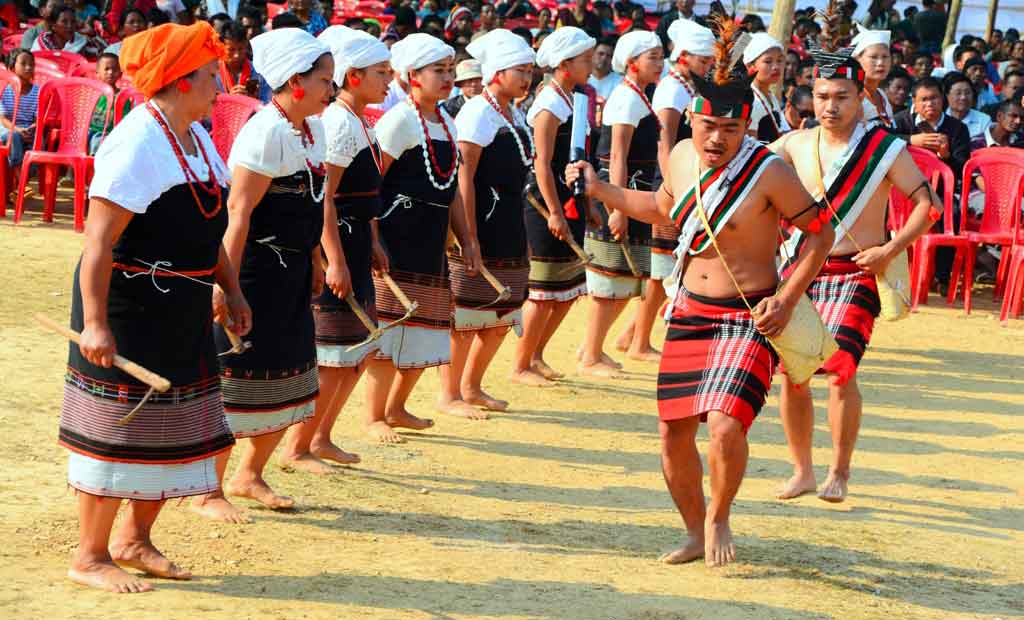
Lui Ngai Ni is the seed-sowing festival in Manipur that is celebrated by the tribes in Manipur. The name of this festival is taken from three different languages of the Naga tribes. However, in each language, the meaning remains the same, sowing of seeds. By dancing and singing, the tribe people pay homage to the god of crops for a good harvest.
Time: February
Duration: 1-day
Highlights: Traditional dance

